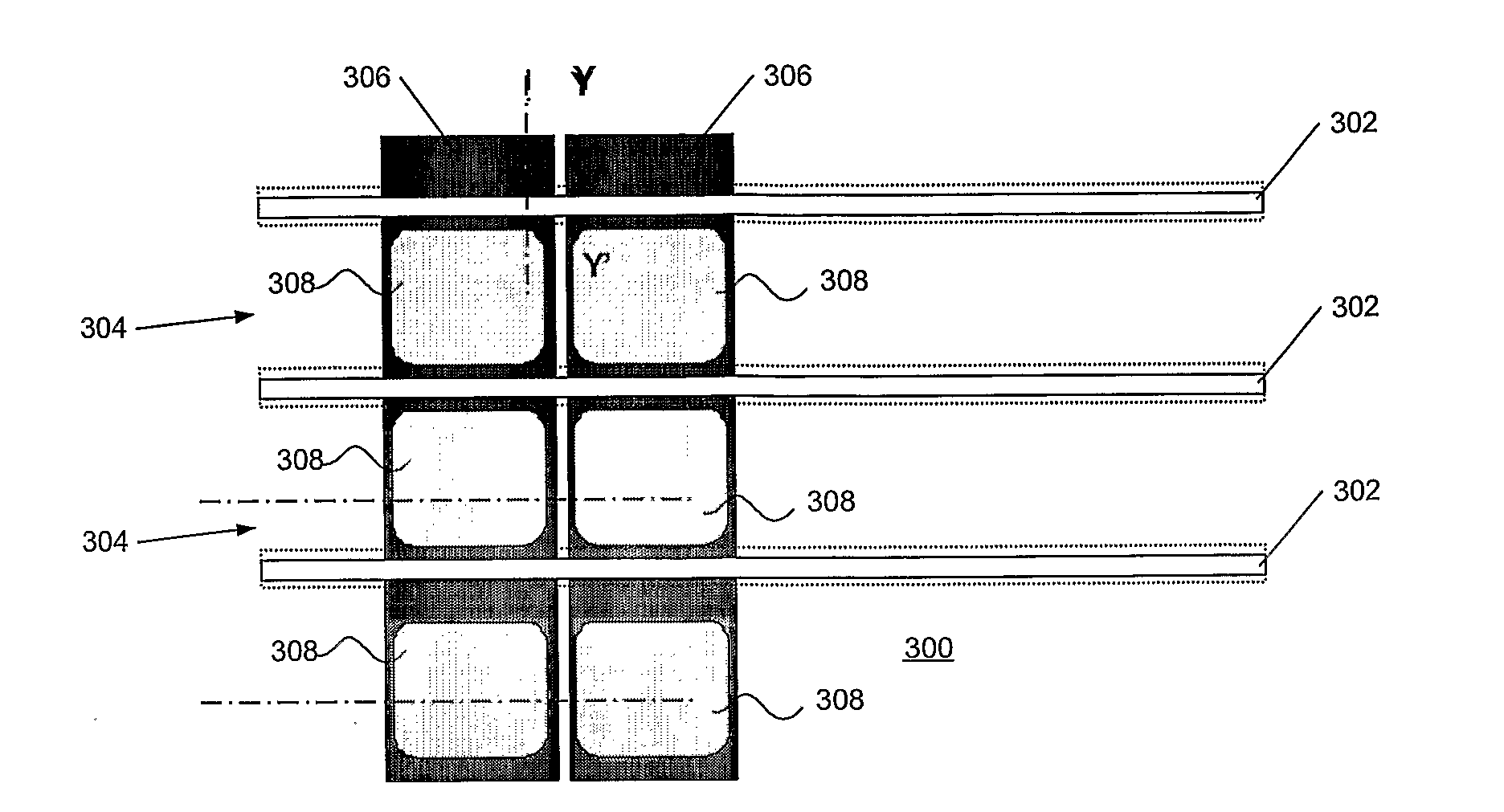Solvents for PEDOT-Solutions for Ink-Jet Printing
- Summary
- Abstract
- Description
- Claims
- Application Information
AI Technical Summary
Benefits of technology
Problems solved by technology
Method used
Image
Examples
examples
[0092]2 new glycerol-based PEDOT formulations were evaluated for swathe joins, printed non-interlaced:
[0093]Formulation A: 1% solids content (30:1 PSS:PEDOT), 30% Glycerol, 69% Water
[0094]Formulation B: 1% solids content (40:1 PSS:PEDOT), 30% Glycerol, 69% Water
Formulation A
[0095]This formulation produced films which were swathe-free in cross-section, and showed dramatically-improved swathe joins when the displays were lit up. There was no evidence of a change in LEP profile on the PEDOT composition at the swathe join. The composition was still well contained within the pixel as was the LEP.
[0096]FIG. 9 shows film profiles for a range of pixels across a display formed using this composition. It can be seen that the profiles across the display are very similar to each other from the 15th to the 40th pixel. FIG. 10 shows average deviation from the average thickness of the films in FIG. 9. No significant change occurs at the swathe join (30-31 column).
[0097]FIG. 11 shows film profiles ...
PUM
| Property | Measurement | Unit |
|---|---|---|
| Fraction | aaaaa | aaaaa |
| Fraction | aaaaa | aaaaa |
| Fraction | aaaaa | aaaaa |
Abstract
Description
Claims
Application Information
 Login to View More
Login to View More - R&D
- Intellectual Property
- Life Sciences
- Materials
- Tech Scout
- Unparalleled Data Quality
- Higher Quality Content
- 60% Fewer Hallucinations
Browse by: Latest US Patents, China's latest patents, Technical Efficacy Thesaurus, Application Domain, Technology Topic, Popular Technical Reports.
© 2025 PatSnap. All rights reserved.Legal|Privacy policy|Modern Slavery Act Transparency Statement|Sitemap|About US| Contact US: help@patsnap.com



